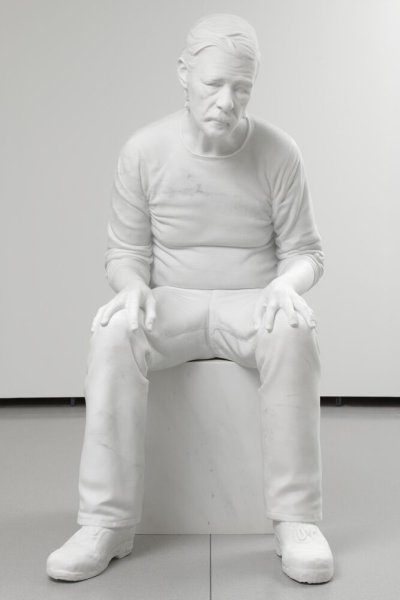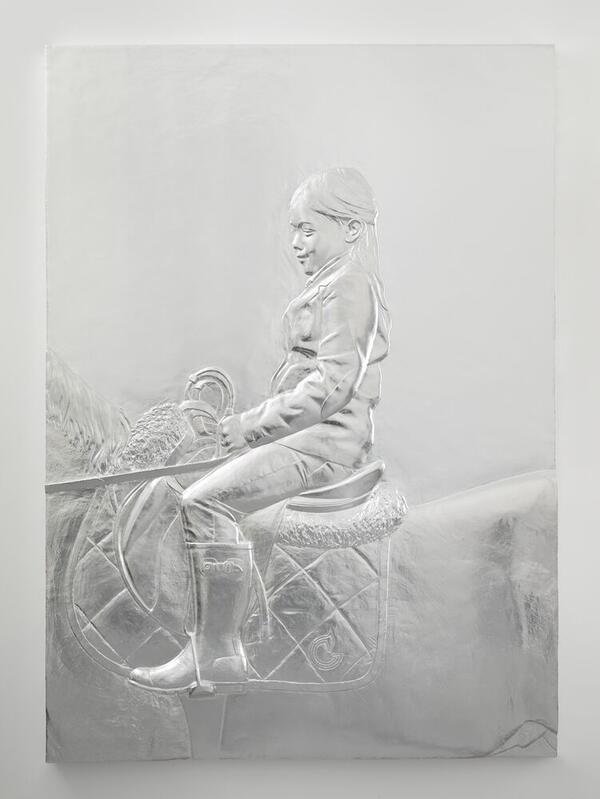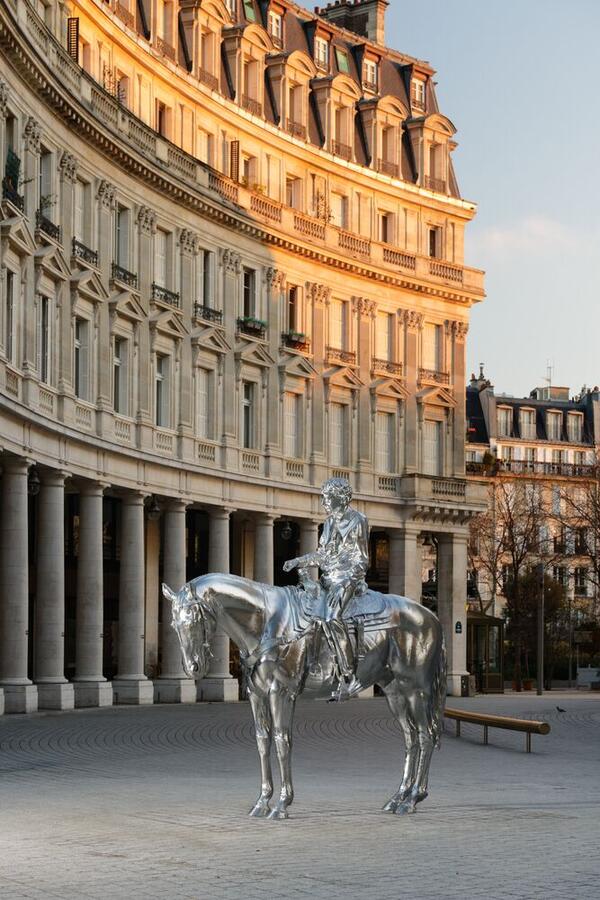Jeff
Jeff, 2021
Marbre
Courtesy Matthew Marks Gallery
204 × 104 × 124 cm
Taking a drug addicted man from the street as a model, Charles Ray ren-ders, through the pose and the density of the sculpture, the very life of the man represented: the waiting, the weight of a difficult existence, age, destitution, solitude. The character dis-plays a certain embarrassment, his attitude seems awkward, worried. Without any other attribute, context, or narrative, the work manages, through its mass, its monumentality, its altered scale, its recourse to the realism of details as well as their stylization, to render, with great restraint, the pathos of this human destiny, erected as a universal figure.
The sculpture contrasts starkly with the type of sculpture to which it refers: usually this posture evokes power, and is common in representations of kings, prophets, or divinities on a throne. In these models of classical statuary, the figures look at the viewer with serenity and authority. One also thinks of the archetypal American statue of a seated man: that of Abraham Lincoln, father of the nation at the heart of its symbolic nerve centre, Washington, D.C.. Just as Horse and Rider subverts the genre of the equestrian portrait, Charles Ray transposes the model of the great seated portrait by representing an anti-hero, on the fringe of the models of contemporary society and the figures of American mythology.
Jeff’s dejected and defeated appearance contrasts with the breadth of the figure’s presence, the expressiveness of his features reminiscent of famous sculpted portraits, from Auguste Rodin’s Man with a Broken Nose (1863–64) to Daniele da Volterra’s sixteenth-century portrait of Michelangelo, just as the marble workmanship places the portrait of the outcast in the ranks of the greatest figures in classical sculpture. Jeff is seen by Charles Ray as a modern reinterpretation of Christ, “as human as he is divine, as he was described to me when I was a child, but which I was unable to imagine.”










